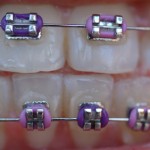
Around 25% of 12-year-old patients in the UK have a class II malocclusion and functional orthodontic appliances are one approach to treatment that has been around for over a hundred years. Fixed functional appliances are an alternate approach and they have been classified into fixed rigid, fixed flexible and fixed hybrid.
The aim of this review was to compare the efficacy of fixed and removable functional appliances in Class II malocclusion in terms of morphological and patient-centred outcomes.
Methods
The review protocol indicates that searches were planned on PubMed/Medline, Embase, The Cochrane Database of Systematic Reviews, The Cochrane Oral Health Group‘s Trials, Google scholar, The Web Of Science, SCOPUS, LILACS, IBECS and the National Research Register databases. These would be supplemented by searches in the journals, American Journal of Orthodontic, the Angle Journal of Orthodontist, European Journal of Orthodontics, British Journal of Orthodontics, Australian Journal of Orthodontics.
Randomised (RCTs) or non-randomised controlled clinical trials (CCTs) involving any type of fixed functional appliances compared with any removable functional appliance in children under the age of 16 with Class II malocclusion and overjet greater than 5mm were considered.
Two reviewers independently selected studies, and assessed risk of bias using the Cochrane risk of bias tool. Overall quality of evidence was assessed using the GRADE system.
Results
- 4 studies (2 RCTs, 2 CCTs) were included.
- Two studies compared the Twin-Block and the Herbst appliances while the others compared the Activator with Forsus and the Twin Force Bite Corrector appliances, respectively 3 studies were considered to be at high risk of bias and 1 at unclear risk.
- A narrative summary of the findings is presented.
Conclusions
The authors concluded:
On the basis of limited evidence both fixed and removable functional appliances are effective in reducing overjet in children; however, there remains insufficient evidence to differentiate between fixed and removable variants in respect of dental and skeletal effects or indeed in terms of patient experiences. Further well-designed randomised clinical trials to assess the efficacy of fixed versus removable functional appliances with a particular emphasis on patient-centred measures are required.
Comments
This review has adopted a good methodological approach including the prior publication of the review protocol on the PROSPERO database. Despite a broad search strategy only a small number of studies met the review’s criteria and none of the included studies was at low risk of bias.
The discussion raises the issue of variations in the cephalometric parameters used in the studies and the lack of consistency across studies. This inconsistency of approach was also noted in the use of the patient centered measures recorded. This inconsistency of common outcomes is a common problem in a wide range of dental settings and The COMET (Core Outcome Measures in Effectiveness Trials) Initiative is bringing group together to help agree these common outcomes.
The 2013 Cochrane review by Thiruvenkatachari et al looked at fixed versus removable functional appliances for children with Class II malocclusion. They included 17 studies and found:-
The evidence suggests that providing early orthodontic treatment for children with prominent upper front teeth is more effective in reducing the incidence of incisal trauma than providing one course of orthodontic treatment when the child is in early adolescence. There appears to be no other advantages for providing treatment early when compared to treatment in adolescence.
Links
Primary paper
Pacha MM, Fleming PS, Johal A. A comparison of the efficacy of fixed versus removable functional appliances in children with Class II malocclusion: A systematic review. Eur J Orthod. 2015 Nov 30. pii: cjv086. [Epub ahead of print] Review. PubMed PMID: 26628629.
Other references
Original review protocol on PROSPERO
Thiruvenkatachari B, Harrison JE, Worthington HV, O’Brien KD. Orthodontic treatment for prominent upper front teeth (Class II malocclusion) in children. Cochrane Database Syst Rev. 2013 Nov 13;11:CD003452. doi: 10.1002/14651858.CD003452.pub3. Review. PubMed PMID: 24226169.
Dental Elf -19th Aug – 2015 – Fixed functional appliances for class II malocclusions

Class II malocclusion- fixed or removable functional appliances? https://t.co/nUk8OOcM3y
Limited evidence both fixed and removable functional appliances effective in reducing overjet in children https://t.co/nUk8OOcM3y
Fixed versus removable functional appliances in children with Class II malocclusion https://t.co/nUk8OOcM3y
From the abstract of the study: “However, when the numbers needed to treat were calculated, early treatment with functional appliances prevents 1 incidence of incisal trauma for every 10 patients (95% CI, 5-174), and headgear treatment prevents 1 incidence of incisal trauma for every 6 patients (95% CI, 3-23)” Patients and their parents has to be informed about the Number Needed to treat to obtain a valid informed consent. If a child is less active than another child with prominent upper front teeth the likelyhood of trauma will also be less.
Class II malocclusion- Fixed versus removable functional appliances https://t.co/nUk8OOcM3y
Don’t miss- Class II malocclusion- fixed or removable functional appliances? https://t.co/nUk8OOcM3y
[…] Dental Elf – 9th Dec 2015 – Class II malocclusion- fixed or removable functional applian… […]